Scientific name Anableps | Phylum Chordata Rank Genus | |
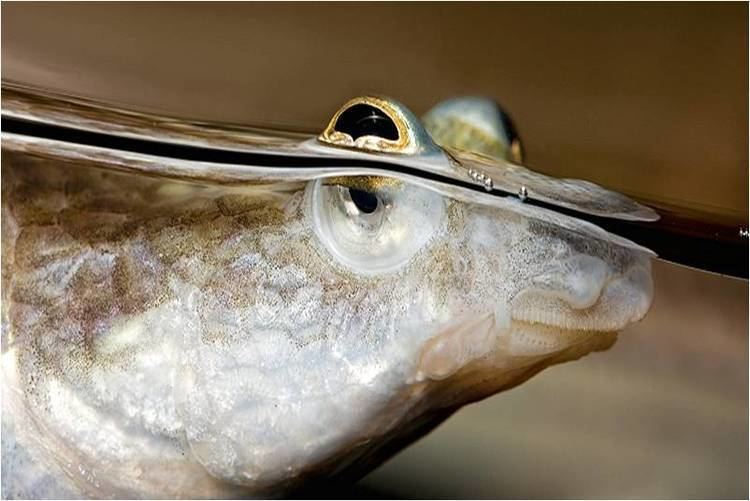 | ||
Similar Anablepidae, Anableps anableps, Cyprinodontiformes, Onesided livebearer, Belonesox belizanus | ||
Vieraugen anableps four eyed fish haus des meeres
The four-eyed fishes are a genus, Anableps, of fishes in the family Anablepidae. They have eyes raised above the top of the head and divided in two different parts, so that they can see below and above the water surface at the same time.
Contents
- Vieraugen anableps four eyed fish haus des meeres
- Fish helps other fish give birth four eyed fish anableps anableps
- Species
- Physical characteristics
- Behavior
- References
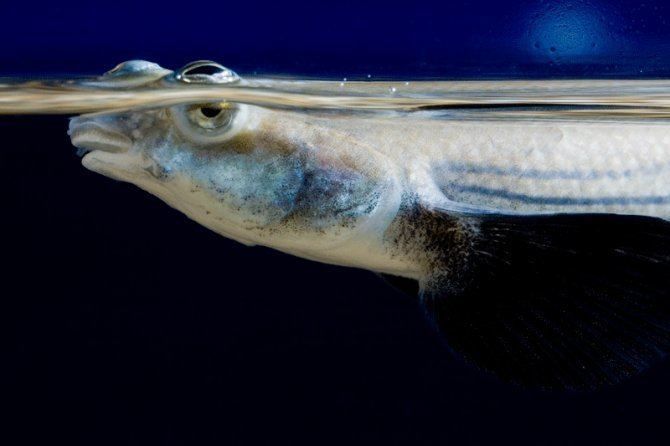
Like their relatives, the onesided livebearers, four-eyed fishes only mate on one side, right-"handed" males with left-"handed" females and vice versa.
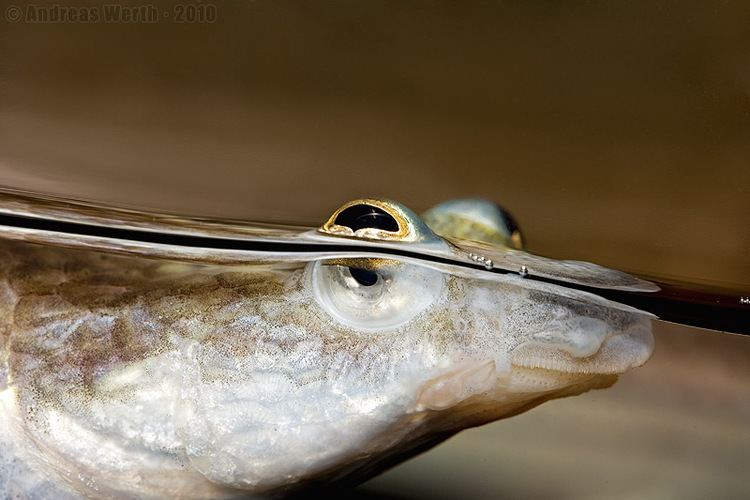
These fish inhabit freshwater and brackishwater and are only rarely coastal marine. They originate from lowlands in southern Mexico to Honduras and northern South America.
Fish helps other fish give birth four eyed fish anableps anableps
Species
There are currently three recognized species in this genus:
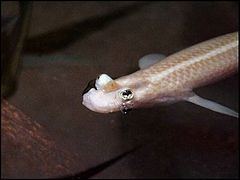
Physical characteristics
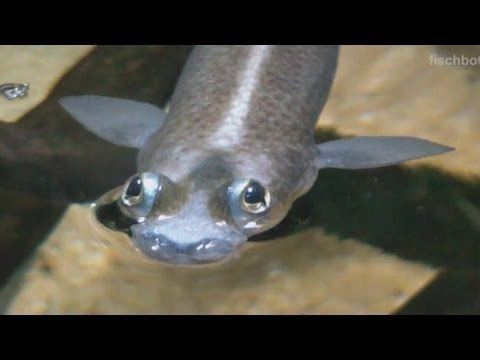
The maximum length of four-eyed fishes is up to 32 cm TL in A. microlepis, making this species the largest in the order Cyprinidontiformes.
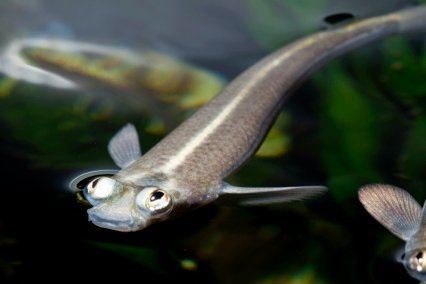
Four-eyed fish have only two eyes, but the eyes are specially adapted for their surface-dwelling lifestyle. The eyes are positioned on the top of the head, and the fish floats at the water surface with only the lower half of each eye underwater. The two halves are divided by a band of tissue and the eye has two pupils, connected by part of the iris. The upper half of the eye is adapted for vision in air, the lower half for vision in water. The lens of the eye also changes in thickness top to bottom to account for the difference in the refractive indices of air versus water.
Four-eyed fish are livebearers. Along with their sister genus Jenynsia they mate on one side only, right-"handed" males with left-"handed" females and vice versa. The male has specialized anal rays which are greatly elongated and fused into a tube called a gonopodium associated with the sperm duct which he uses as an intromittent organ to deliver sperm to the female.
Behavior
Four-eyed fish spend most of their time at the surface of the water. Their diet mostly consists of terrestrial insects which are readily available at the surface, however they may consume other foods such as other invertebrates, diatoms, and small fishes.
The fish will group differently depending on the species. A. anableps commonly congregates in schools. A. microlepis also is gregarious, but restricts its schools to about a dozen individuals; it is also recorded to be found singly or as couples.
A. anableps is also known for the ability to survive out of water exposed to air, such as during low tide.
